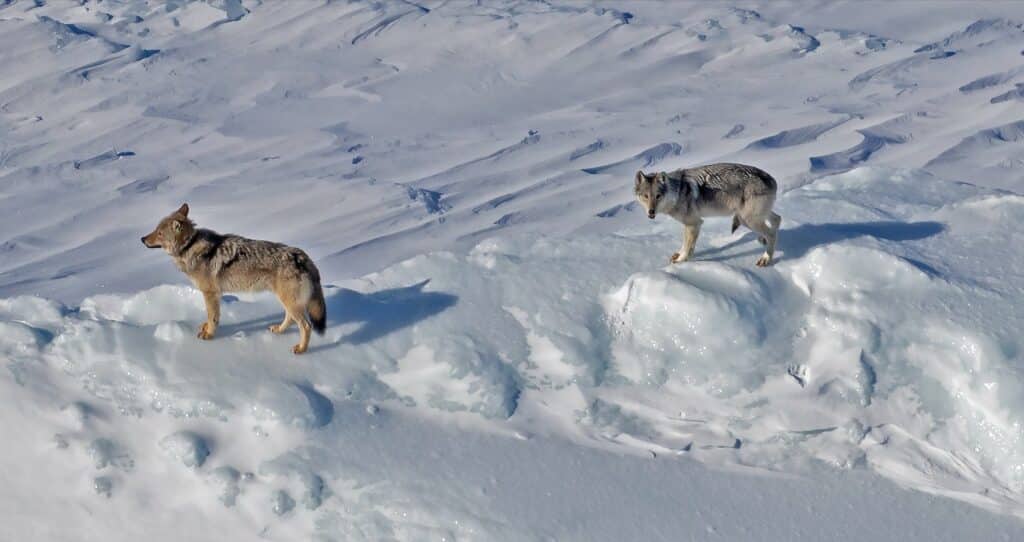
The annual report from scientists who have long studied the predator-prey relationship between wolves and moose on Isle Royale shows recent wolf reintroduction has had some of its desired effects. After 19 wolves were brought over from Michigan, Minnesota, and Ontario in 2018 and 2019, the animals have been busy breeding. There are now 28 total wolves, organized into two packs, in the National Park.
Wolves were reintroduced by the National Park Service and partners because of their role in controlling moose numbers. The wolf population had dwindled to two or fewer wolves in the past decade, due to a number of reasons. In response, the moose population swelled to the point it was having significant impacts on the vegetation and delicate ecological balance.
The relationship between wolves and moose on Isle Royale has also been the subject of the longest study of its type in the world. Researchers have been tracking the relationship between the iconic northern species, showing how their fates are interconnected, since 1958.
Scientists with the project say in the past two years, as the wolf packs have formed and the population has grown, the animals have had an impact. The moose population has dropped by 28 percent, from 1,876 to 1,346 animals. Wolves are not the only reason why, though. Infestations of winter ticks and malnutrition have also contributed, both also connected to the species’ high population. Spruce budworm outbreaks have also reduced the amount of winter food available.
“Over the past year we found an unusually high number of moose that appear to have died due to malnutrition,” said Sarah Hoy, one of the project’s lead scientists. “The population appears to be suffering from a food shortage, especially in winter when moose don’t have many good options of things to eat.”
But the wolves have also made a dent. The scientists estimate they were responsible for nearly nine percent of moose mortality in the past year. That’s the highest it’s been in more than 10 years.
The wolves also seem to be forming into their complex characteristic pack structures, and reproducing and raising young. It is believed that there was one litter of wolf pups born in 2019 and two litters born in 2020. In 2022, both packs had at least one litter.
While they continue to monitor the wolf and moose population dynamic, the team has also attached GPS collars to several animals from both species. The data from these devices will help more closely track their movements and behavior.
More information:
- Isle Royale Winter Study: Good Year for Wolves, Tough One for Moose – Michigan Tech University
- Ecological Studies of Wolves on Isle Royale – Annual Report 2021-2022 (PDF)
- Wolves and Moose of Isle Royale website

